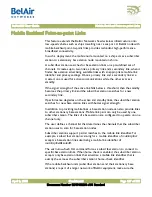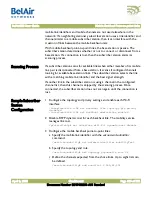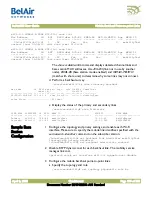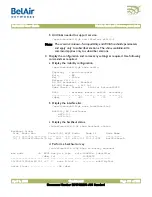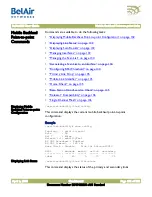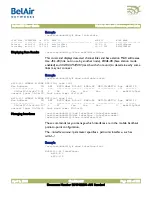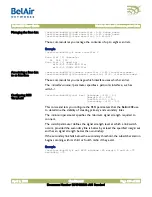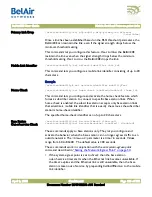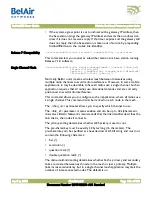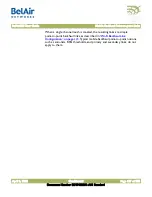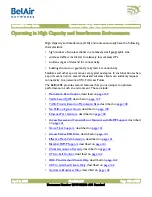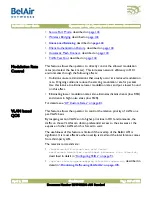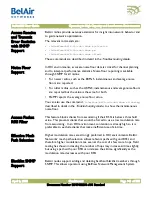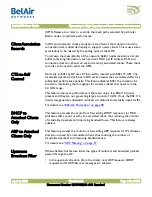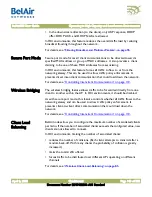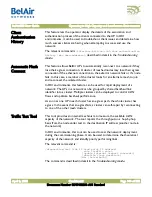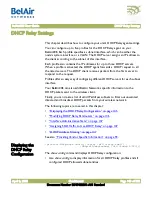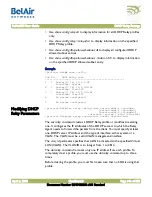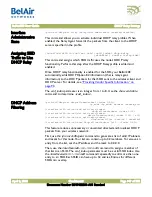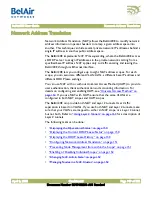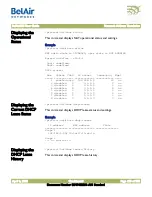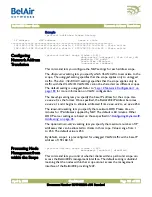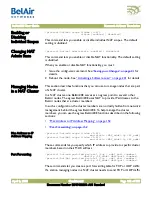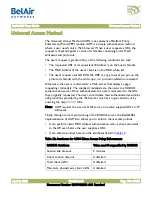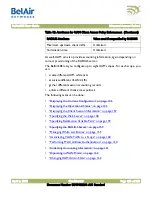
BelAir20E User Guide
Operating in High Capacity and Interference Environments
April 2, 2012
Confidential
Document Number BDTM02201-A01 Standard
Access Receive
and Transmit
Error Statistics
with SNMP
Support
BelAir radios provide extensive statistics for insight into network behavior and
to guide network optimization.
The relevant commands are:
•
/interface/wifi-<n>-<m>/show statistics
•
/interface/wifi-<n>-<m>/show pm
•
/interface/wifi-<n>-<m>/show client
These commands are described in detail in the
Troubleshooting Guide
.
Noise Floor
Support
In HCI environments, accurate noise floor data is critical for channel planning
and to interpret performance statistics. Noise floor reporting is available
through SNMP for all radios:
• For newer radios, such as the ERMv5, instantaneous and average noise
floors are reported.
• For older radios, such as the ARMv3, instantaneous and average noise floors
are reported but the value is the same for both.
• SNMP reports the average noise floor value.
You can also use the command
/interface/wifi-<n>-<m>/show rf-survey
,
described in detail in the
Troubleshooting Guide
, to show the instantaneous
noise floor.
Access Packet
RSSI Filter
This feature blocks clients from associating if their RSSI is below a threshold
value. This prevents clients that would be forced to use a low modulation rate
from associating. In an HCI environment, contention is already high so it is
preferable to exclude clients that make inefficient use of air-time.
Effective Mesh
Path Selection
Higher modulation rates are strongly preferred in HCI environments. BelAir
Networks’ mesh path selection software favors paths with good RSSI, and
therefore higher modulation rates, even at the cost of a few more hops. Field
testing has shown increasing the number of hops may increase airtime slightly,
but using a path with poor RSSI can increase the airtime significantly as the
modulation rate decreases with poor RSSI.
Blacklist SNMP
Support
BelAir nodes support adding and deleting backhaul blacklist members through
SNMP. This allows operators using BelView Network Management System

